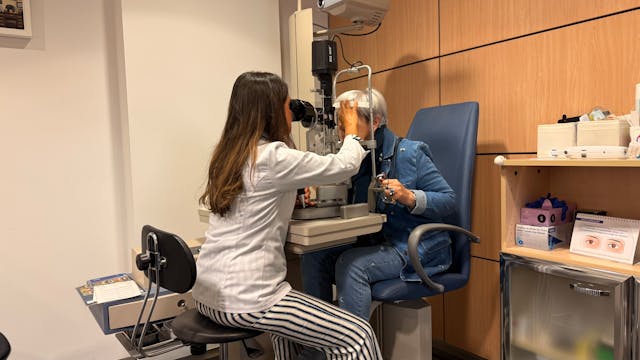A team of scientists from the Medical University of Vienna and the Medical University of Graz has uncovered a new genetic cause of hereditary optic atrophy. This degenerative disease leads to gradual vision loss. Their findings, recently published in Genetics in Medicine, offer new opportunities for diagnosis and research into the underlying biological processes responsible for the condition. This discovery represents a significant step forward in understanding why some families are affected by inherited vision loss.
The research began with the study of a large Austrian family in which seven members across three generations suffered from optic atrophy. Genome-wide sequencing revealed a previously unknown mutation in the PPIB gene, which encodes an enzyme that helps proteins fold correctly and removes defective ones. In cells from affected individuals, this mutation was found to disrupt mitochondrial function—the “power plants” of cells that provide the energy needed for healthy vision.
Further analysis of existing genetic databases led the team to identify 12 additional individuals from 8 unrelated families who shared the same PPIB mutation, confirming its link to the disease. According to study leader Professor Wolfgang M. Schmidt of MedUni Vienna, the discovery establishes PPIB as a new optic atrophy gene. His colleague, Dr Thomas P. Georgi of MedUni Graz, highlighted that this finding allows for more precise genetic diagnoses and better support for affected families, helping clinicians offer more accurate advice and care.
Optic atrophy damages the optic nerve, which transmits signals from the retina to the brain. It causes a gradual loss of visual clarity, reduced colour perception, and central blind spots. Although around twenty genetic forms of optic atrophy are currently known—most related to mitochondrial dysfunction—about 60 per cent of patients still lack a confirmed genetic explanation. Identifying PPIB helps fill this gap, giving researchers a new clue to explore and patients a more accurate understanding of their condition.
Beyond its relevance to optic atrophy, the discovery of the PPIB mutation could shed light on other diseases linked to mitochondrial damage and protein misfolding. As genome sequencing becomes increasingly available, testing for PPIB variants may soon become part of standard genetic screenings for unexplained vision loss. This breakthrough, therefore, not only advances scientific knowledge but also holds real promise for improving diagnosis, care, and future treatment of inherited eye diseases.
More information: Thomas P. Georgi et al, A recurrent missense variant in the PPIB gene encoding peptidylprolyl isomerase B underlies adult-onset autosomal
dominant optic atrophy, Genetics in Medicine. DOI: 10.1016/j.gim.2025.101595
Journal information: Genetics in Medicine Provided by Medical University of Vienna








